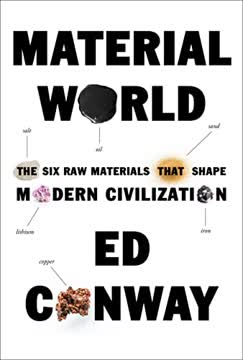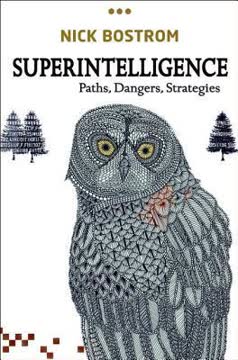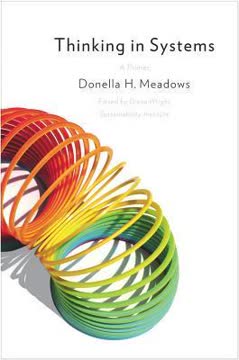つの重要なポイント
1. 技術は自然現象のプログラミングである
技術とは、現象を捉え、それを利用することである。
自然の構成要素。 技術の本質は、人間の目的を達成するために自然現象を調整することである。料理に火を使う単純な方法から、現代の電子機器における量子効果の複雑な操作まで、すべての技術は自然に存在する一つまたは複数の効果を利用している。この基本原則は、技術の進歩が科学的理解と密接に結びついている理由を説明している。新しい現象を発見することで、新しい技術を創造するためのツールが得られるのだ。
複雑さの層。 技術は現象をそのままの形で使用することはほとんどない。代わりに、複数の効果を組み合わせ、しばしば複雑な方法で目的を達成する。例えば、現代のスマートフォンは通信に電磁波を利用し、処理にトランジスタの量子トンネル効果を使用し、電源にはバッテリーの電気化学を利用している。この現象の層化により、ますます洗練された技術が可能になる。
- 利用される現象の例:
- 料理や冶金における熱
- 通信における電磁波
- 医薬品や材料における化学反応
- 計算における量子効果
2. すべての技術は既存の要素の組み合わせである
新しい技術は、それ自体が技術である構成要素から作られ、さらに新しい技術の構築のための潜在的な構成要素となる。
再帰的構造。 技術は独立した発明ではなく、既存のコンポーネントの組み合わせであり、それ自体が技術である。この再帰的な性質により、最も複雑なデバイスでも、各部分が独自の目的と機能を持つ単純な部分に分解できる。この構造を理解することは、技術革新と問題解決において重要である。
再結合による革新。 技術の組み合わせの性質は、革新がしばしば異なる分野のアイデアやコンポーネントを結びつけることから生まれる理由を説明している。また、既存の技術の数が増えるにつれて、新しい組み合わせの可能性が指数関数的に増加することも示唆している。この原則は、現代における技術変化の加速ペースの根底にある。
- 重要な意味:
- 新しい技術は将来の革新の可能性を開く
- 異分野の知識が突破口を生む
- 技術の進歩に伴い革新の可能性が増大する
3. ドメイン: 可能性を形作る技術の集合体
ドメインとは、デバイスや方法を形成するために引き出されるコンポーネントのクラスター、その実践と知識の集合、組み合わせのルール、および関連する思考方法の集合である。
技術的エコシステム。 ドメインは関連する技術の集合体だけでなく、知識、実践、可能性のエコシステム全体である。それは、エンジニアや発明家がその分野内で問題と解決策を考える方法を形作る。ドメインを理解することは、技術がどのように進化し、なぜ特定の革新が特定の時期に現れるのかを把握するために重要である。
再ドメイン化としての革新。 最も重要な技術的進歩のいくつかは、既存の技術を改善することではなく、あるドメインの原則やコンポーネントを別のドメインの問題解決に適用することから生まれる。このプロセスは革命的な変化をもたらし、以前は想像もできなかった新しい可能性を開くことがある。
- 技術ドメインの例:
- エレクトロニクス
- バイオテクノロジー
- 材料科学
- 情報技術
- ドメインの影響:
- ある時代の「可能」を定義する
- 産業と経済構造を形作る
- 問題解決のアプローチに影響を与える
4. 発明のプロセス: ニーズと効果を結びつける
発明とは、ニーズを満たすために効果を結びつけることである。
問題と解決のペアリング。 発明は天才の神秘的なプロセスではなく、特定のニーズを既知の効果や現象に基づいて潜在的な解決策と結びつける体系的なプロセスである。この理解は革新を神秘化せず、より効果的に促進する方法を示唆している。
再帰的な問題解決。 発明のプロセスはしばしば再帰的であり、各潜在的な解決策が新たな課題を明らかにする。この反復的な性質は、重要な発明が実用化されるまでに何年もかかる理由を説明している。
- 発明の主要な段階:
- ニーズや問題の特定
- ニーズを満たす可能性のある効果や現象の認識
- ニーズと効果を結びつける原則の概念化
- 原則の実用的な実装の開発
- 解決策の精緻化と最適化
5. 構造的深化: 技術がより複雑になる方法
制限を克服するためにサブシステムを追加することで、技術は進化するにつれて複雑化する。これにより、構造に「深さ」や設計の洗練が加わる。
複雑化による進化。 技術が成熟するにつれて、しばしば単純化するのではなく、より複雑になる。このプロセスは構造的深化と呼ばれ、エンジニアが制限を克服し、性能を向上させ、機能を拡張するためにサブシステムを追加することで起こる。この傾向を理解することで、成熟した技術がなぜ簡単な代替技術に取って代わられるのが難しいのかを説明できる。
性能と複雑さのトレードオフ。 構造的深化により、技術は高い性能や広範な機能を達成できるが、その代償として複雑さが増す。このトレードオフは、コアな問題に対してより簡単な解決策を提供する破壊的な革新の機会を生み出し、より複雑な既存技術を置き換える可能性がある。
- 構造的深化の理由:
- 性能の制限を克服する
- さまざまな条件に適応する
- 安全性と信頼性を向上させる
- 機能を拡張する
- 例:
- 航空機エンジンが時間とともにより洗練される
- スマートフォンがより多くのセンサーや機能を統合する
6. 組み合わせ的進化: 技術は自らを創造する
技術は自らを創造する。
自己生成的な進歩。 技術の進化は自己強化的なプロセスである。新しい技術は将来の革新のための構成要素となり、可能性のセットが絶えず拡大する。この原則は、技術変化の加速ペースを説明し、革新の可能性が時間とともに指数関数的に増加することを示唆している。
非線形な発展。 技術の進歩は滑らかでも予測可能でもない。むしろ、急速な進展の期間と統合の期間が交互に現れる。このパターンは、革新の組み合わせ的な性質から生じ、一つの突破口が複数の新しい可能性を開くことができる。
- 組み合わせ的進化の主要な側面:
- 既存の技術が新しい技術の構成要素となる
- 既存の技術の数が増えると革新の可能性が増大する
- 進歩は予測不可能で非線形であることが多い
- 意味:
- 長期的な技術予測は本質的に困難である
- 異分野の知識がますます価値を持つ
- 変化のペースは加速し続ける可能性が高い
7. 経済は技術の表現である
経済は技術の表現である。
技術が経済構造を形作る。 経済を技術の容器として見るのではなく、技術によって根本的に形作られるものとして理解すべきである。この視点は、技術革命が深い経済的および社会的変化をもたらす理由を説明するのに役立つ。
構造的経済変化。 新しい技術が出現し普及するにつれて、それは既存の経済構造内で効率を向上させるだけでなく、ビジネスモデルから規制フレームワークに至るまで、まったく新しいアレンジメントを必要とし、創造することが多い。この構造変化のプロセスは、長期的な経済発展を理解するための鍵である。
- 技術が経済を形作る方法:
- 可能な製品やサービスを定義する
- 組織構造やビジネスモデルに影響を与える
- 労働市場やスキル要件を形作る
- 新しい産業の創出と他の産業の衰退を促進する
- 技術駆動の経済変化の例:
- 工業化と工場の台頭
- デジタルトランスフォーメーションとプラットフォーム経済
8. 技術のパラドックス: 自然との関係における希望と不安
私たちは技術に希望を抱き、生活を良くし、問題を解決し、困難から抜け出し、自分たちや子供たちのために望む未来を提供してくれることを期待している。しかし、人間として、私たちはこの希望を抱く対象—技術—ではなく、何か別のものに共鳴している。
信頼と希望のジレンマ。 人間は技術との関係において根本的な緊張を抱えている。私たちは進歩と問題解決のために技術に依存しているが、しばしば自然との方がより親しみを感じる。このパラドックスは、技術進歩に対する私たちの両義的な感情の多くの根底にある。
未来の航海。 技術が遺伝子工学や人工知能のような分野でますます強力かつ普及するにつれて、この緊張はさらに強まる可能性がある。この緊張を解決するには、技術進歩を受け入れつつ、自然界との深い結びつきを意識する微妙なアプローチが必要である。
- 技術的不安の源:
- 制御や主体性の喪失への恐れ
- 環境への影響に対する懸念
- 社会的および倫理的な影響への懸念
- バランスを取る要因:
- 技術の利点の認識
- より「自然」または持続可能な技術の開発努力
- 技術開発のための倫理的枠組み
最終更新日:
FAQ
What's The Nature of Technology about?
- Exploration of Technology: The book explores the essence and evolution of technology, questioning what it is and how it develops over time. W. Brian Arthur provides a comprehensive theory of technology, emphasizing its interconnectedness and historical context.
- Combinatorial Evolution: Arthur introduces the concept of "combinatorial evolution," where new technologies emerge from the combination of existing ones. This highlights the importance of combination in technological advancement.
- Economic Interplay: The book discusses how technology and the economy evolve together, suggesting that technological advancements drive economic growth and transformation.
Why should I read The Nature of Technology?
- Deep Understanding: The book offers a comprehensive framework for understanding technology, making it accessible to both specialists and general readers. Arthur's insights help readers appreciate the complexities of technology in everyday life.
- Relevance to Current Issues: As technology increasingly shapes our world, understanding its nature and evolution is vital for navigating contemporary challenges. The book addresses the implications of technology on society, economy, and the environment.
- Engaging Writing Style: Arthur presents complex ideas in plain English, making the book approachable. His engaging narrative encourages readers to think critically about the role of technology in their lives.
What are the key takeaways of The Nature of Technology?
- Technology as Combination: A central takeaway is that technology evolves through the combination of existing technologies, which Arthur refers to as "combinatorial evolution." This principle highlights the interconnectedness of technological advancements.
- Recursive Structure: Technologies have a recursive structure, meaning that each component of a technology can also be considered a technology in its own right. This insight emphasizes the complexity and depth of technological systems.
- Role of Phenomena: Arthur argues that technologies are fundamentally based on the exploitation of natural phenomena. Understanding these phenomena is crucial for grasping how technologies are developed and utilized.
How does W. Brian Arthur define technology in The Nature of Technology?
- Means to Fulfill Purpose: Arthur defines technology as a means to fulfill a human purpose, encompassing devices, methods, and processes. This broad definition allows for a wide range of technologies to be considered.
- Assemblage of Practices: He describes technology as an assemblage of practices and components, highlighting the collaborative nature of technological development. This perspective emphasizes the importance of collective knowledge in creating technology.
- Collection of Devices: Arthur refers to technology as the totality of devices and engineering practices available to a culture, reflecting the cumulative nature of technological advancement.
What is "combinatorial evolution" in The Nature of Technology?
- Combination of Technologies: Combinatorial evolution is the process by which new technologies arise from the combination of existing ones. This allows for the gradual development of more complex technologies over time.
- Recursive Structure: Technologies consist of components that are themselves technologies, creating a recursive structure. This insight reveals how technologies build upon one another, leading to innovation and advancement.
- Capturing Phenomena: The evolution of technology is driven by the capture and harnessing of natural phenomena. This principle highlights the importance of understanding the effects that technologies exploit.
How does The Nature of Technology explain the relationship between technology and the economy?
- Mutual Influence: Arthur argues that the economy and technology are inextricably linked, with each influencing the other. As new technologies emerge, they reshape economic structures, while economic conditions can drive technological innovation.
- Structural Change: The introduction of new technologies leads to structural changes in the economy, creating new industries and altering existing ones. This dynamic process reflects the ongoing evolution of both technology and economic arrangements.
- Opportunity Niches: Technologies create opportunity niches for further innovations, which in turn drive economic growth. This interplay between technological advancement and economic adaptation is a central theme in understanding modern economies.
What role do phenomena play in technology according to The Nature of Technology?
- Foundation of Technology: Arthur asserts that all technologies are based on the exploitation of natural phenomena, which serve as the foundation for technological development. This connection emphasizes the relationship between technology and the natural world.
- Orchestration of Effects: Technology is described as a programming of phenomena to fulfill human purposes, highlighting the orchestration of various effects in creating functional technologies.
- Discovery and Utilization: The process of uncovering phenomena is crucial for technological advancement, as new effects lead to new technologies. Scientific inquiry and experimentation contribute to the discovery of these phenomena.
What is the "pyramid of causality" in The Nature of Technology?
- Foundation of Technology: The pyramid of causality refers to the idea that every new technology is supported by a foundation of existing technologies and knowledge. This concept illustrates how innovations are built upon previous advancements.
- Complex Interdependencies: This pyramid includes not only direct predecessors but also supporting principles, components, and the interactions among people involved in the technological process.
- Implications for Invention: Understanding the pyramid of causality helps clarify why certain technologies emerge when they do, emphasizing the importance of timing and the availability of necessary components and knowledge.
How does W. Brian Arthur differentiate between standard engineering and invention in The Nature of Technology?
- Standard Engineering: Arthur describes standard engineering as the process of designing and constructing new instances of known technologies. This involves problem-solving and applying existing knowledge to create functional solutions.
- Invention: In contrast, invention is characterized by the creation of radically new technologies that utilize different principles. This process often involves linking a need with a novel effect or principle to achieve a specific purpose.
- Cumulative Process: Both standard engineering and invention contribute to technological evolution, with standard engineering providing solutions that can become building blocks for future innovations.
What role do "opportunity niches" play in technological evolution according to The Nature of Technology?
- Definition of Opportunity Niches: Opportunity niches are unmet needs or problems that arise within the context of existing technologies. These niches create demand for new solutions and innovations, driving the evolution of technology.
- Creation of New Technologies: As technologies evolve, they often generate new opportunity niches that call for further innovations. This process illustrates the reciprocal relationship between technology and the needs it creates.
- Historical Context: Opportunity niches are not static; they change as technologies develop and societal needs evolve. This dynamic nature of opportunity niches is crucial for understanding how technological advancements emerge over time.
What is the significance of "structural deepening" in technological development as discussed in The Nature of Technology?
- Definition of Structural Deepening: Structural deepening refers to the process by which technologies become more complex and sophisticated over time. This complexity arises from the addition of new components and subsystems that enhance performance and functionality.
- Evolution of Technologies: As technologies mature, they often require additional systems to address limitations and improve efficiency. This process of deepening contributes to the overall evolution of technology and its increasing complexity.
- Implications for Innovation: Understanding structural deepening helps clarify how technologies adapt to changing needs and environments. This adaptability is crucial for fostering innovation and ensuring that technologies remain relevant in a rapidly evolving landscape.
What are the best quotes from The Nature of Technology and what do they mean?
- "Technology creates our world.": This quote emphasizes the profound impact of technology on shaping human existence and societal structures. It highlights the idea that technology is not just a tool but a fundamental force in defining our reality.
- "Technologies consist of other technologies.": This statement underscores the recursive nature of technology, where new innovations are built upon existing ones. It reflects the interconnectedness of technological development and the importance of combination in evolution.
- "A technology is a phenomenon captured and put to use.": This quote encapsulates Arthur's definition of technology, emphasizing the role of natural phenomena in driving technological advancement. It highlights the idea that technology is fundamentally about harnessing and utilizing the effects of nature.
レビュー
本書『The Nature of Technology』は、技術の進化と社会への影響についての洞察に満ちた分析で、主に好意的な評価を受けている。読者は、既存の要素の組み合わせとして技術を理解するためのアーサーの明確な枠組みや、技術が経済をどのように形作るかについての探求を高く評価している。一部の読者は文章が乾燥している、または繰り返しが多いと感じるが、多くの人々は本書の深さと独創性を称賛している。批評家は抽象的な概念が理解しにくいと指摘する一方で、支持者は本書が技術とイノベーションに対する視点を変える可能性があることを強調している。
Similar Books












